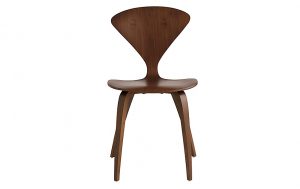What is code? We think of computers and confusing combinations of words, letters and number that make up a website, or a GIF, right? I substitute teach and in one 7th grade math class, I taught code. It is so relevant nowadays that adolescents are learning it.
Well in Chapter 3 of Visual Communication, Analogical Code is talking about images. Codes are signs that create a picture’s narrative, their story.

For example, take this chair. It just looks like a really freaking uncomfortable place to sit. It looks like what fancy people would have at their kitchen tables. It looks like what I would sling jackets over and books on.
So if you take a little bit longer of a look at it, what do you see?
I see a wine glass where the back is.
I see two noses almost touching.
I see a sort of grasshopper platypus mutation, ready to pounce.
There could be an infinite amount of images and narratives you could give this one simple item; a chair.
I was struck in one of Longwood’s buildings, their chair cushions seemed to all have faces on them. Since then, I’ve kind of looked for narratives in chairs that I might never have thought about before.
Except scary ones, those are just scary.

References:
Lester, P. M. (2014). Visual communication: Images with messages (6th ed.). Boston, MA: Wadsworth/Cengage Learning.


 As you can see, quite literally, these are pieces, looking like pawns from a chess game. That’s what I saw at first. You see that they are on the ground, they are all the same color and shape.
As you can see, quite literally, these are pieces, looking like pawns from a chess game. That’s what I saw at first. You see that they are on the ground, they are all the same color and shape.